
38 minute read
No regrets
by AgriHQ
Farmer’s bold yet rewarding decision to switch farming systems
A Taranaki farmer has turned his entire farming operation 180 degrees and is loving the change.
When farmers change their farm system, it’s often just a case of making minor changes to streamline the operation. However, when Taranaki farmers Adam and Taryn Pearce decided to make changes they didn’t do things by halves.
The Pearces operate a 60-hectare, 180-cow farm at Lepperton. When they decided to change their farming system, it was not going to be just a small tweak for them to achieve that goal. They would be turning their high-producing, high stocking rate, high input and splitcalving System 5 farm into an autumn calving System 1 farm.
The Pearces came home to the family farm in 2011 as 50:50 sharemilkers. After five years they bought two-thirds of the family farm and leased the remaining 20ha. They are the third generation to work and own the farm.
“I think mum and dad get quite a buzz seeing the legacy continue. I grew up on this farm, and went farming straight out of high school. I then went to Massey University to complete a Bachelor of Applied Science degree,” Adam says.
“I started it but didn’t finish. I hated being inside in the classroom. I realised that if getting a degree meant that I was going to become an agricultural rep and spend most of my time inside, then it wasn’t for me.
“After two years at university I went farming and never looked back. I worked for two farmers before coming here.”
Taryn is a full-time teacher and Adam’s parents help out on the farm when needed, otherwise he is the sole labour unit on the property. He has made many farming practice changes during his time on the farm to derive more profit.
They have been running a splitcalving for the past seven years and
Continued page 22
FARM FACTS
• Farm owners: Adam and Taryn
Pearce • Location: Lepperton, Taranaki • Farm size: 60-hectare, 58ha effective • Cows: 180 Friesian-Jersey.
Previously milked 300 cows when
System 5 • Production: 128,000kg MS 300 cows, 90,000kg 180 cows

The herd has been reduced from more than 300 to 180 and produces 90,000 kilograms of milksolids.
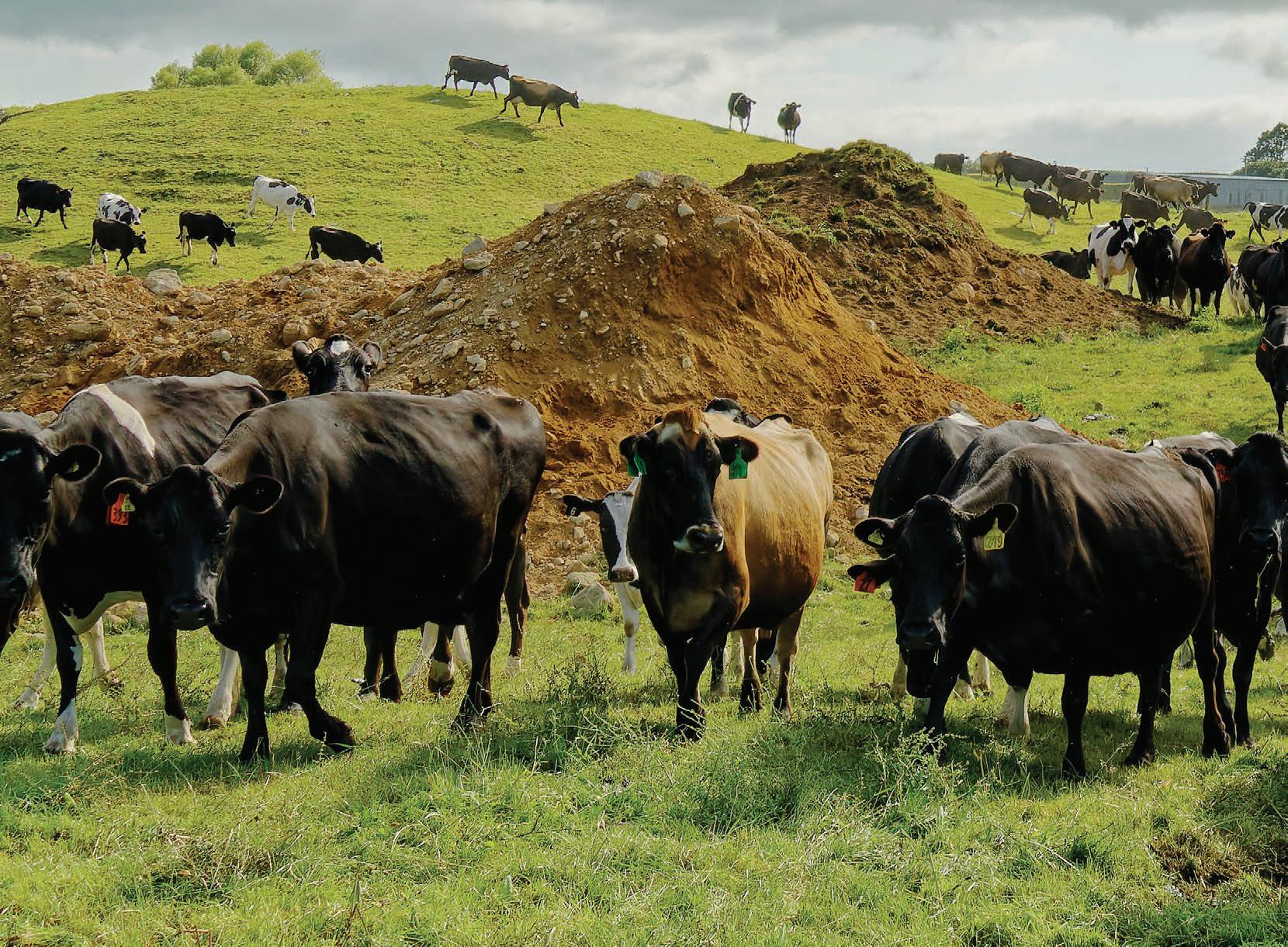

Adam with his UBCO electric farm bike. He loves the bike and thinks it pays for itself in two years. There is practically no maintenance or moving parts to break. this is his second dry period due to selling his spring herd in October 2019. Consequently, this is his first season of complete autumn calving.
“The high input, high stocking rate System 5 farming operation was always only going to be a means to an end. I was going to carry on for a further five years to quickly clear debt but that pressure took its toll on my mental health. The entire system wore me down, mentally and physically,” he says.
“Because I don’t like employing staff, I was doing the workload of two people and wore myself out. It takes a toll on all parts of the body physically and, being honest, I suffered mentally too.”
He says it takes a lot of effort and concentration to run an efficient System 5 farm and get it right every time. It’s very easy to quickly lose a lot of money. But if you get it right, that profit quickly pays off debt. To transition to autumn milking you either sell your spring herd and buy an autumn herd, split-calve them and slowly transition into autumn calving, or continue milking them for 18 months.

“Last year we had 340 cows between member for afternoon milkings and the two herds and the heifers. some farm work.”
“We’re now down to 180. I mostly As a spring farmer their herd initially stick with Friesian-Jersey cross cows produced 78,000 kilograms of milksolids for their volume and milk solids,” he (200 cows). This rose to a high of says. 128,000kg MS when milking 300 cows,
“When I changed to autumn calving I split-calving and operating at System sold the spring herd, which meant that 5. He now autumn milks 180 cows and
I could run the farm single-handedly. HFS - Dairy Farmer Dec 2020 - 210x86mm 5mm bleed - PRINT.pdf 1 17/11/20 12:25 AM When we split-calved I employed a staff Continued page 24 “Obviously, you must initially make the decision to go autumn calving. You’ve just got to put the fear behind you. It’s such a breeze and I’ve never looked back.”



TALK TO THE EXPERTS FOR FARMING SUPPORT
07 858 4233
farmservices.nz
info@farmservices.nz
The Pearce children Amelia, Penelope and Maddeline do their share on-farm and always wear their good dresses on the farm, much to Adam’s amusement. produces 90,000kg MS at System 1.
“The farm only just handled the 300plus cows, so it’s a joy to be running 180. When we bought the farm we immediately put it up to a System 5. It was very intensive but a lot of profit came through to pay a lot of debt down early. Last spring we sold the spring herd, which allowed us to pay off a large chunk of debt,” he says.
“We now don’t have to produce so much on the farm. Our goal is to not import any feed. Last year we had to buy in some because I underestimated how much maize we would use. This year we’ve put in a lot more and we shouldn’t have to buy any. We want to be selfcontained and I think we’ve reached that goal.”
One-third of the farm is planted in maize and lucerne crops and all supplemental feed is grown on the farm. They don’t make any hay, but usually make 150 silage bales.
The 3ha of lucerne is fed during winter as a protein to complement the maize silage. The lucerne makes fabulous silage. The lucerne paddocks are three years old and he aims to get five to seven years out of them.
The lucerne paddocks are permanently out of the grazing rotation, but he knows it’s worthwhile due to it being such a valuable silage crop. The 3ha crop produces 22-24 tonnes of extremely high protein silage per year.
“I usually put in 10ha of maize, but this season I planted an extra 5ha due to a failed oats crop that was destined to be baled and fed out during winter. I’m undecided whether I’ll keep the extra maize or sell it. Last year I grew 5ha of maize but ran out and wished I had seven. So, we did 10 and now we’ve got 15,” he says.
“If I sell that it will give me the extra


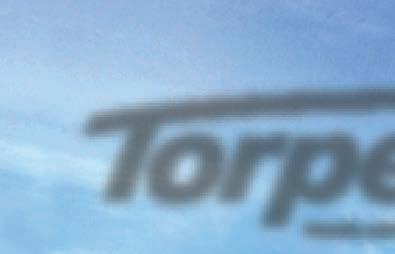


cash flow to pay for all the contracting for the crops. Last year we sold 10ha which not only paid for the contracting, but for all of the seed too.”
Adam doesn’t want to see a feed truck coming through his farm gate if he can help it. He believes in the sustainability aspect of being a self-contained unit. It also removes all imported feed costs. His costs are then a known quantity and he’s not at the mercy of fluctuating feed prices.
“When you put 5ha of maize in you know exactly what it cost you and where you can slot it into your budget. When I first got here my best PKE price was $160 per tonne, and at the end we were paying $250 per tonne,” he says.
“When cropping hay or silage, I try to only use the effluent paddocks as a way to pull the potash out of them. Potash can build up in the effluent platform paddocks too. Taking silage off those paddocks takes it down to a better level and lowers the animal health risks.”
Cowshed effluent is pumped to ponds and then out to pasture via a travelling irrigator. The irrigation platform covers 33% (20ha) of the farm.
The 18-aside cowshed is extremely efficient and it only takes him an hour to milk 180 cows.
“I really don’t know why it’s so efficient. Mum and dad have always commented about its speed. I thought that maybe having a straight exit would be faster, but the cows seem to really like turning when they leave. They row up really well, I think the zig-zag rails help,” he says.
“Having calm people in the shed helps too. Mum often does the afternoon milkings and I think we have a very similar manner in the shed. When we’ve had staff, it tends to unsettle the cows.
“I injured my back in June, so I wasn’t able to get out on the farm very often. Mum and dad, after not having to do too much on the farm for 10 years, jumped in and had to do everything. They worked through the winter until I was able to get back to morning milkings in late October. Adam in the shed. During the dry period he is doing maintenance. The left side of the shed is in the process of being resurfaced.
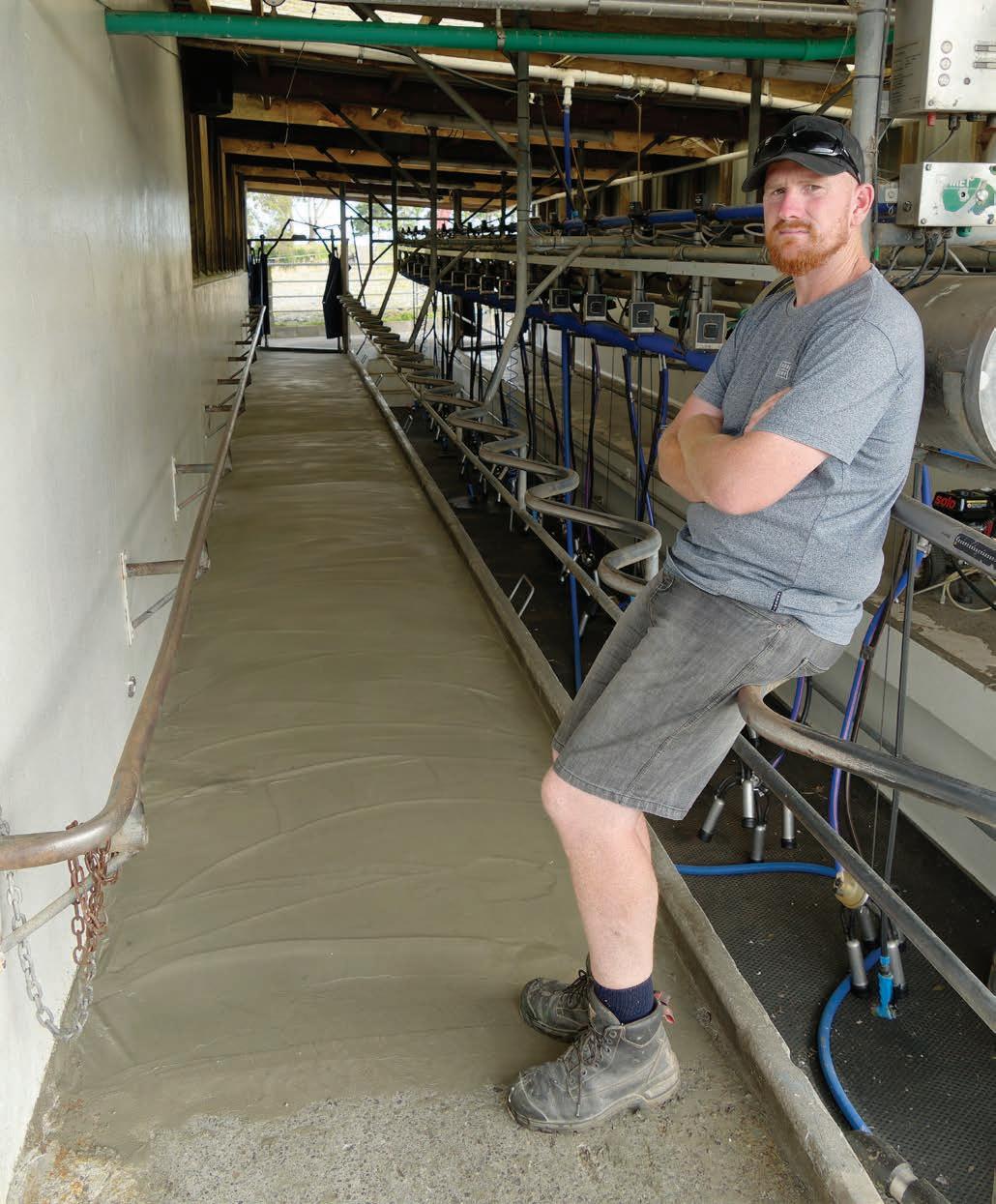
A unique aspect of this farm is they do not raise any replacement calves anymore, they buy all of the replacement cows. He purchases other farmers’ empty spring calving cows during March and April after his herd has begun calving.
Consequently, there are no young stock coming through that would have to be grazed on the farm or with a grazer, which eliminates another cost.
The herd begins calving on February 20 and by March 10 half of the herd has calved. This is when he begins to buy replacements.
He picks the best of the best out of those herds. Those high-figure cows arrive and carry on milking and are mated in May and June. They produce right through the season. Going forward he plans to buy between 30-40 replacements each year.
“After a spring calving herd is scanned at the end of February, farmers then send me a profile of their empties. I know what the cows look like because an agent will send photos. I’ll then select the ones I want from BW, cell count and production records,” he says.
“They have to be producing, because I want them to carry on through to Christmas. We have a pregnancy test in August/September and if any are still empty, I make a decision based on whether I have grass, or if the spring has arrived early.
“The decisions are ‘do I send them to the works now or do I take them through to Christmas and get the extra production?’”
This season he sold a lot of his empty culls as in-milk because there was such a demand for in-milk cows.
They do not have any stock on the farm that doesn’t produce milk.
Adam buys replacement cows for around $600 each, milks them and if they’re still empty in December they’re culled and he usually gets about $1000 for them.
“You always win because you buy them low and sell them high if they’re still empty. You also win if they’re in-calf and go through to your next season. I pick through the available animals to
Amelia gets up close with the herd and tries to hand-feed them.

make sure we get top quality cows,” he says.
Their in-calf rates over the past few years has been very high, with 94% last year and 82% prior to this.
In the past they have sold all calves as four-day olds, which made life a breeze when Adam was still milking more than 300 cows. The calves were only on the farm for four days and calf rearing was one less thing to worry about.
“We’re now under less pressure and have gone down the Wagyu contract path. I originally wanted to do a four-day or 10-day contract before selling them to a calf rearer, but there aren’t as many calf rearers in autumn, so I could only do a contract for 100kg calves,” he says.
“We made the decision to get every cow in-calf to Wagyu. I estimate that 115 got in-calf to them because we only used their straws for four weeks. We used short gestation Hereford straws at the end of the 10-week mating period”
Adam wouldn’t have used Wagyu bulls without a contract through LIC and First Light Wagyu. It’s a unique market in the autumn because there aren’t as many buyers. He has previously reared some 100kg Herefords and struggled to sell them.
This is his first Wagyu season and he’s expectantly waiting for the first calves to arrive around February 20. The Wagyu project is a trial and, if it works, he will probably adjust the farm’s facilities. He is employing a staff member to teach the calves to drink before feeding them with an ad-lib system.
Autumn calving helps drought-proof the farm and last year was a good example. It was very dry but his cows didn’t need a lot of feed during that period because they weren’t milking.
“The grass during that period is high in dry matter due to the dry weather. The cows just put on weight. Their maintenance is much lower too, because they’re not trying to keep warm,” he says.
One criticism that is often levelled at autumn calving is the greater amount of crops that must be grown to get the cows through winter. However, the crops are growing when the cows’ production is declining and they don’t need as much feed. The cows are also drying off just as the weather becomes drier, which also helps mitigate the dry stress period.
“Others say that you shouldn’t grow crops on-farm because it uses up the milking area. Well, my cows don’t milk in that area. If I had all of that area in grass there’d be a surplus, and I’d be making it into silage anyway,” he says.
Some say that farmers who talk about autumn calving make it sound overly nice and rosy, but neglect to mention that they have to milk through winter. Adam agrees that he has to get up and milk in the winter during June and July when spring calving farmers aren’t. But he knows that they are typically dry months.
“August and September are your wet months. Yes I’m milking, but I’m not outside collecting calves,” he says.
As a spring farmer, the family typically took holidays in June, but Adam’s mental health really struggled with that.
“When I was away on our winter holidays all I could think was, ‘are the cows making mud? Are the people looking after my farm and shifting the cows like I would?’ I couldn’t mentally get away from the farm,” he says.
“Now when we’re on holiday, it’s late summer. What can the cows do to the paddocks? Nothing. Practically anyone can move the herd then.”
He says the biggest bonus of autumn milking is the fine weather to holiday and then to calve through. Late summer and autumn is a time of nice weather
Sunflowers planted around the edge to beautify the crop for road users and for the kids at the kindergarten over the road. Adam and Amelia discussing the sunflowers.
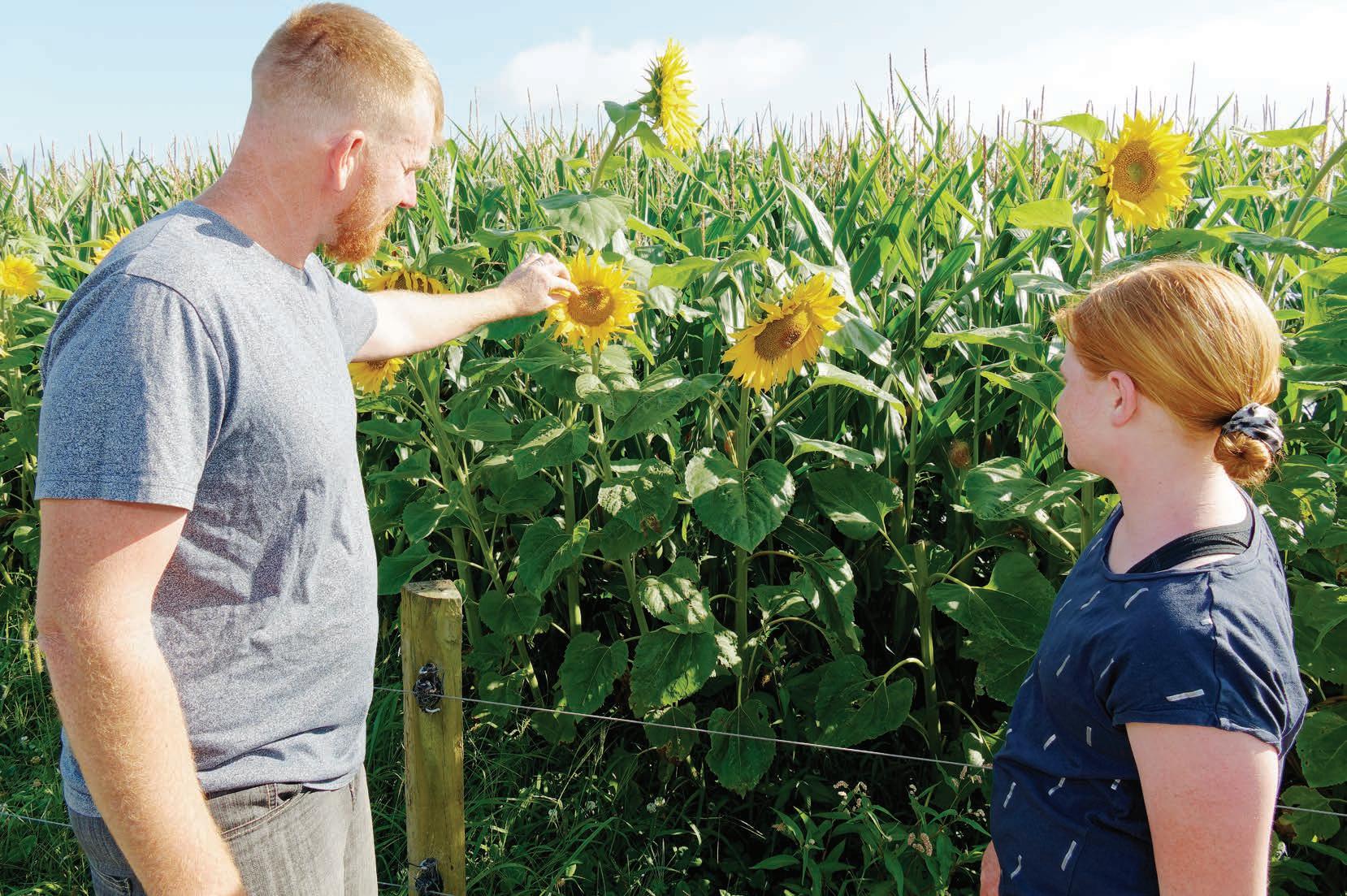
and it’s a pleasure to be working outside.
“It’s so much nicer to be grubbing thistles in pleasant weather. If you have a water leak, you go to fix it in a t-shirt, not in heavy, wet weather gear and be up to your elbows in mud,” he says.
He feels that autumn calving could be easily adapted to any region of New Zealand.
“We make less mud because the cows are content after feeding on maize on the feedpad before heading back to the paddock. I still think that even in wetter regions, you would still make less mud than break-fed, dry cows during winter,” he says.
“A spring calving herd stomps in most of the grass because it’s so wet underfoot. Winter dry cows can get the paddocks down to 1300kg DM/ha, whereas the lowest we get to is 1500kg DM/ha. We grow more grass because it isn’t in shock,” he says.
“In a wetter climate you could finetune your maize input to carry you through the wetter winter.”
There seems to be a burgeoning interest in autumn calving. Thirteen months ago, Adam held an on-farm discussion group as part of a Smaller Milk and Supply Herds (SMASH) conference. Usually five to seven people attend the on-farm groups, whereas the autumn calving event attracted 65-70 people.
“Our family life is way better now. Because Taryn is a full-time teacher, I do the farming and look after the kids – all the pick-ups and the drop-offs and afternoon activities. We just move our milkings around to suit,” he says.
“Autumn calving works really well with Taryn being a school teacher. This year we were able to go to the East Cape for two weeks, there’s no pressure.”
In June last year, Adam climbed over a feed trough to catch a cow he’d accidentally let out from AI. He tripped over the feed trough and came down on his side and herniated a disc. The injury was inoperable and led to him seriously contemplating continuing farming after his doctor told him that maybe he should look for a different job.
“For the last six months we’ve been assessing whether to sell up or hold on. But it’s such a delight to be outside farming. I really enjoy morning milkings and love nature and the environment. I can’t think of a better job,” he says.
Adam is happy with the way the farming operation is running and doesn’t think he’ll be making any major changes. He advises anyone contemplating autumn calving to talk to a number of autumn calving farmers and see a range of different practices.
“Obviously, you must initially make the decision to go autumn calving. You’ve just got to put the fear behind you. It’s such a breeze and I’ve never looked back. If I was going to sell up and go bigger or elsewhere in the country, I’d change the system to autumn calving in a flash,” he says.
“Try and find me an autumn calving farmer who doesn’t like it or has gone back to spring calving. I don’t think you’d find one. I’ve never come across any that are negative about it once they’ve gone there.” n
Celebrating dairy women
By Anne Boswell
New Zealand’s dairy women will have the chance to join their peers for celebration, learning and friendship in April during one of three Allflex and DWN2021 Step
Up Together conferences around the country.
Held as three regional one-day conferences in Taupo (April 8), Ashburton (April 13) and Queenstown (April 15), the conference is a chance for women to get off-farm, hear thought-provoking and entertaining speakers, and spend time with like-minded people while learning and socialising.
Formerly presented as one national conference, held annually in varying regions, the decision was made to reinvent the traditional conference following the success of DWN2020’s online conference, which showcased the resilience and the dedication to connection and learning within the farming community.
“While we know our members appreciate the chance to get together, some women may struggle to get off the farm for a few days to travel to a national location,” conference chair Renee Fa’atui says.
“We see this new format as a great chance to try something new, while meeting our members halfway and recognising that their needs may have changed in the past year.”
The regional conferences will maintain the organisation’s reputation for relevant and informative workshops, gala dinners and brilliant keynote speakers – which, for 2021, has been announced as former
Black Stick and three-time Olympian
Gemma McCaw.
“We’re excited to have Gemma share her journey with us as a well-known ambassador for women’s health and wellness,” Fa’atui says.
“Through her career, Gemma has gained knowledge into teamwork and resilience, and as a mum she’s learnt how to balance work, home and family – something many of our attendees are going through as well.
“We think Gemma’s story will resonate with a lot of dairy women.”
Each regional conference will include two workshop sessions: Clear as Water – getting an understanding of the Freshwater Policy, and What Success Looks Like for You – ideas for other ways to invest in your farm and your future.
A third interactive session was chosen based on the needs of the region and include getting hands-on with hoof health, robotics and a genetics specialist from LIC (Taupo); You Only Live Once: talking about mental health (Ashburton); and Breeding Success – a look at the ultimate breeding herd health.
The Taupo conference will host a gala dinner, themed as Party Through the Decades, to announce both the Fonterra Dairy Women of the Year and the Dairy Women’s Network Regional Leaders of the Year for 2021.
Ashburton and Queenstown conferences will finish the day with a networking hour, while also celebrating the Fonterra Dairy Women of the Year and DWN Regional Leader of the Year awards by recognising any finalists and recipients from the region.
This will be the second year that women at the grassroots of DWN have been recognised with the Regional Leader of the Year award.
The award is a celebration of the regional leaders’ role in connecting the network with rural women and the wider community and industry.
“These women are an integral part of

Former Black Stick and three-time Olympian Gemma McCaw will be a keynote speaker at the Dairy Women’s Network 2021 conference.
Renee Fa’atui
DWN; leading, organising and hosting events that encourage learning and connection,” DWN chief executive Jules Benton says.
“As a partner of the Dairy Tomorrow Strategy, DWN supports the building of vibrant and prosperous communities through strengthening community connections.
“Our Regional Leaders are key to the success of this commitment, and they demonstrate our values of inclusivity, building connection and seizing opportunity every day,” she says.
“It’s important that the time these women contribute to their regions, and to building and maintaining community relationships, is acknowledged.”
And now in its 10th year, the 2021 Fonterra Dairy Woman of the Year will be awarded to its next inspiring and passionate leader.
The award recognises an outstanding woman who has contributed to the dairy industry with passion, drive, innovation and leadership.
In February, finalists were put before a judging panel composed of Dairy Women’s Network trustee Sophie Stanley, 2019 Dairy Women of the Year Trish Rankin and representatives from Fonterra, Global Women and Ballance Agri-Nutrients.
The winner will receive a scholarship of up to $20,000 for an approved development programme, professional/ business coaching and/or learning experience – or combination of these – of her choice.
“As always, we have another incredible conference planned,” she says.
“The conference is DWN’s biggest event on the annual dairy industry calendar.
“Our members are involved in DWN courses and events quite often, but our conference is a time when they can really connect with each other and be a part of something bigger.” n

Dairy Women’s Network chief executive Jules Benton says the annual conference is a time members can really connect with each other and be a part of something bigger.
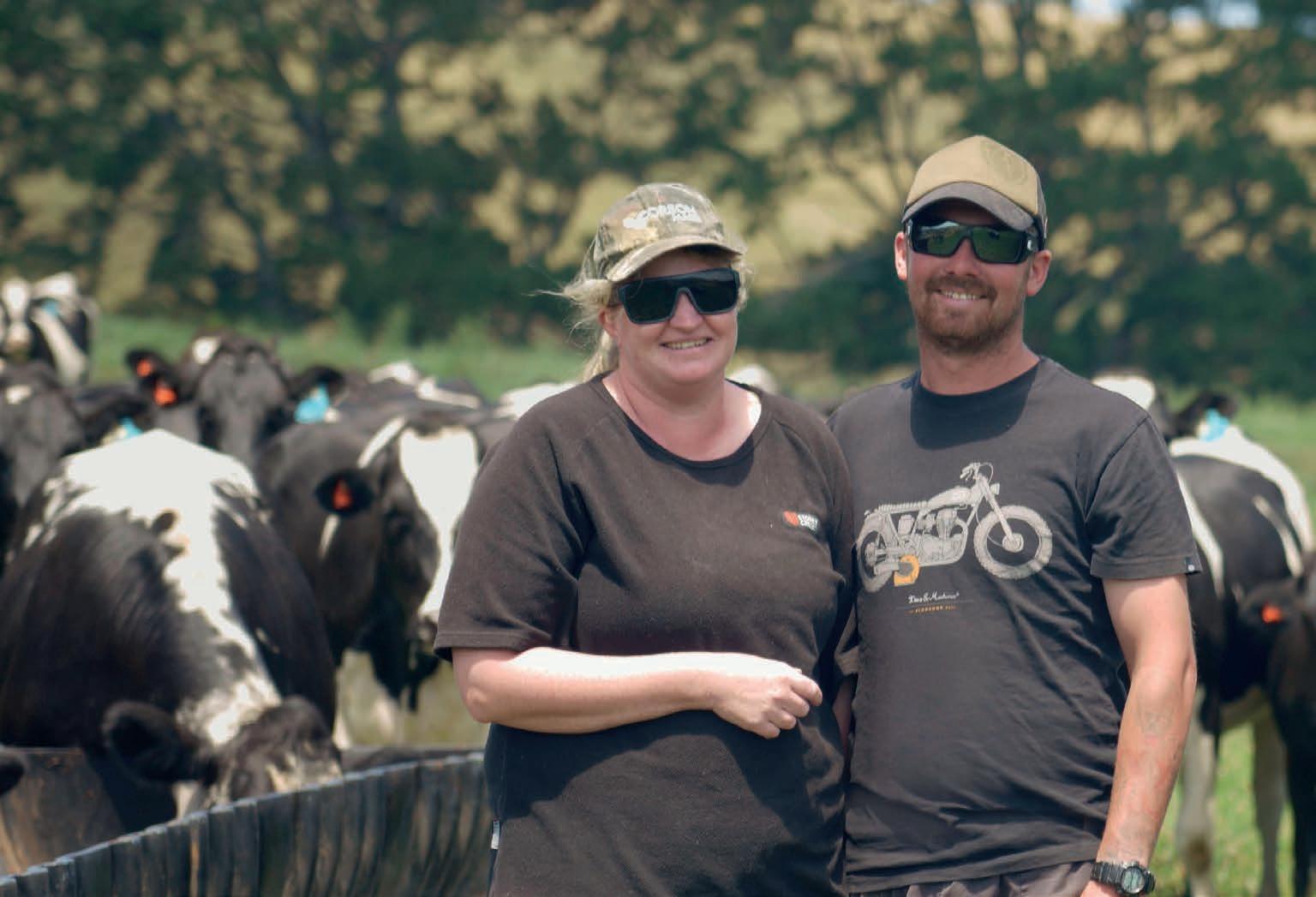
On-farm efficiency at Woodford Holsteins.
Moving Forward Together
Scan Here for more Farmer Stories
senztag.co.nz 0800 220 232
Originally from the Netherlands, Samen managing director Cees van Baar has been working in the genetics industry for nearly 36 years.
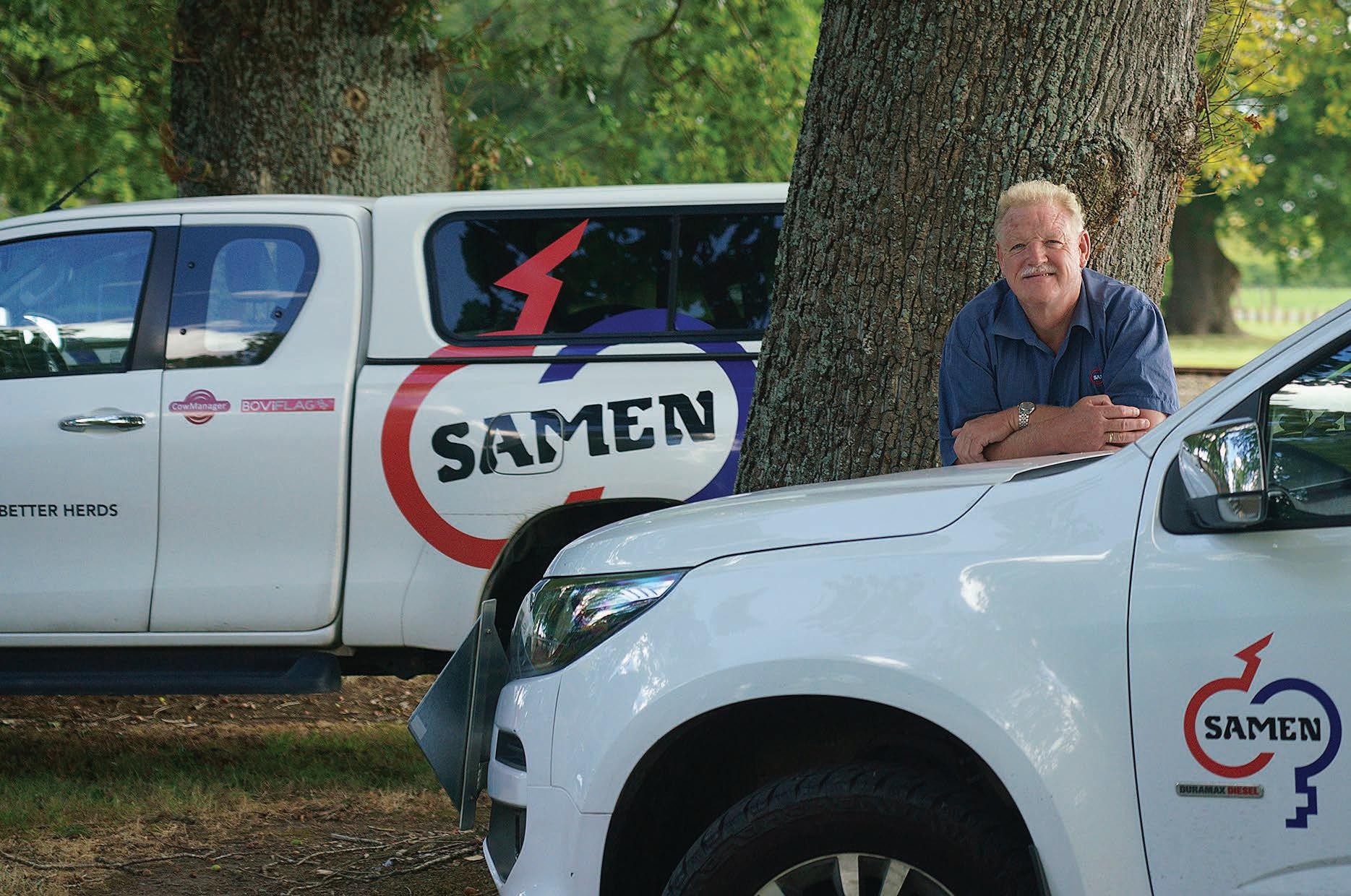
Future of dairy genetics
By Anne Boswell
Cees van Baar’s passion for NZ and its dairy sector is his driving force when it comes to using genetics as a game changer.
Arriving in a foreign country with nothing but a suitcase of clothes and $50 in your pocket can make or break a person, but for Samen managing director Cees van Baar, it was his initiation into an industry he has championed for almost 36 years.
Born in the Netherlands, Cees arrived in New Zealand at age 20 to fulfill his dream of becoming a dairy farmer in the country leading the industry globally.
“There is no better country in which to be dairy farming,” Cees says.
“New Zealand has got to be the dairy farming Mecca, I love NZ agriculture.”
His grandparents were dairy farmers before moving into floriculture and market gardening, so there were few opportunities for him to one day own a dairy farm in the Netherlands.
Nevertheless, Cees graduated from Agricultural College and immigrated to NZ to pursue his dream.
He was sponsored by a family on the Hauraki Plains, starting as a farm assistant before going on to contract milk. Within three years of arriving in NZ, he bought his first herd of cows and spent the next four years 50:50 sharemilking.
During that time he met his wife Annie, who was visiting NZ as an exchange student from the Netherlands.
The couple returned to the Netherlands when Cees took on a role as export manager at genetics company K.I Samen.
“It was great to be able to use my education in the breeding industry and I set up markets in the UK, Ireland and Denmark before moving into Asia and South America,” he says.
However, the frequent international travel proved demanding and it was during this time that he came across the opportunity to form his own company and return to NZ.
BSE, or mad cow disease, was prevalent in the Netherlands and other European countries from 1993-97, restricting the sale of semen products to importing countries such as India.
He saw an opportunity to supply these

countries with product from NZ and returned in 1997 to form Samen, with the help of K.I Samen founder Bas Engelen.
Since then, Samen has grown to become the third largest dairy genetics company in NZ.
“I am so grateful to be part of a sector that gave me such a valuable opportunity,” he says.
“I didn’t come here to waste time and not work hard, so to see the company move from strength to strength is rewarding.”
He admits the focus of the company is different to what it was 25 years ago.
“I’ve started to become one of these old people who has seen a lot of change,” he laughs.
“When I first came to NZ, I thought we could produce five times more milk, that we needed more cows and that our potential was not being reached.
“Now, I have three children who are telling me, ‘dad, we’ve got to think of this planet’.
“My focus now is to look at how we can use genetics to solve the environmental issues facing the dairy industry.”
Cees says he spends little time focused on political agendas that reinforce a Cees van Baar came to New Zealand with next to nothing to fulfil his dream of becoming a dairy farmer before getting into genetics. Wife Annie, Cees and son Nick.

negative public perception of the dairy industry.
“We are often faced with a double standard,” he says.
“The Ministry for Primary Industries (MPI) says we have to milk 15% fewer cows to reduce environmental impact, but instead of saying we need 15% fewer cars to reduce emissions, they suggest ways to make cars more efficient.
“That’s what I want to do – use breeding genetics to make cows more efficient, so we can continue to grow the industry.
“Currently, we are a sitting duck for environmentalists. NZ as a country needs to look to countries who have made the most progress in certain areas, and we need to do that quickly.”
He says improved genetics will help NZ farm fewer cows per hectare with the same level of production, while reducing methane through feed efficiency – but we will not get the genetic gains we want by reusing the same bloodlines.
“Farmers get stuck on one breed because they are led to believe it’s right,” he says.
“Currently, NZ cross-breeding programs are already seeing hybrid vigour fall below 50%, and lower, due to inbreeding.
“When we introduce a new breed, hybrid vigour increases to 86%, translating to better health and efficiency.
“NZ has bred efficient, fertile cows that produce a good return on grassland farming, but the biggest genetic gains are made when we introduce new genetics – so we need to keep doing that.”
Cees says Samen has the ability to select from a huge pool of genetics, imported through 12 different companies.
“We have access to thousands of bulls because of the scale we now operate at,” he says.
“And now with genomics, we can get very specific about what we want. We aim to have a world-leading product line with traits not only suitable for NZ cows, but traits that lend huge prospects to the NZ dairy industry.
“In the past, we have always looked at what the breeder wants, rather than what the national herd needs.
“But we are moving away from that now, instead of asking, ‘where is the cow heading?’ (ask), ‘where is the industry heading?’”
Cees checks out the Belgian Blue bulls, which he says can increase the quality of New Zealand dairy-beef.

He says some exciting new bloodlines coming through include VikingRed, used as part of a three-way cross with Friesian and Jersey, to encourage superior health traits such as mastitis resistance and udder health.
There is also an excellent dairy beef opportunity in the Alpine breeds of French and Swiss origin that excel as dual-purpose animals to produce excellent meat, as well as milk.
“Currently, NZ’s dairy herd is not that capable of breeding a good beef animal within the dairy-beef industry,” he says.
“The Alpine breeds are more efficient in turning pasture into milk and meat. Being able to produce both milk and meat means better utilisation of protein and less excretion of dietary nitrogen into the environment.
“We can also increase the quality of NZ dairy-beef by using double-muscled breeds such as the Belgian Blue.
“New Zealand has the potential to improve the efficiency of the beef industry by better utilising dairy beef. Animals such as Belgian Blue crosses can be slaughtered before their second winter, which is economically attractive. We will also reduce bobby calf numbers.
“In this way we can produce more milk and meat and at the same time continue to reduce emissions.”
Outside of work, Cees is passionate about two very quintessential Kiwi pastimes: fishing and rugby.
“When I first came to NZ, we went out fishing with Young Farmers and I just couldn’t believe how beautiful the scenery was, and how clear the water was,” he says.
“I had gone fishing with my dad in Holland, but the sea there was so murky and unappealing.
“I absolutely love the sea, and I had already decided when we moved back to NZ that the first thing I would do was buy myself a nice boat – and I did.”
Cees attributes rugby to helping him settle into life in NZ.
“When I arrived at age 20, I was asked ‘you’re young and single, how are you going to socialise – church or rugby?’” he laughs.
“I said rugby, and there was soon talk around town about a big, tall Dutch boy who might be keen to play rugby.
“I made a lot of friends through rugby, which made me feel at home in NZ. In Ngatea there wasn’t a lot happening, but you could always talk about rugby.
“I played for eight years, and I still love watching the All Blacks and the Chiefs.”
Cees and Annie have three sons aged 13, 17 and 21. Their eldest son is close to finishing a Bachelor of Ag Commerce at Massey University and works at Samen’s sister company Senztag, while the younger boys attend high school in Hamilton.
Cees says he is excited about the future of dairy genetics in NZ.
“We can tackle all these perceived issues, using a cross section of genetics in the mix,” he says.
“Our farmers are just rapt with their genetics … they have to take you on trust at first, but the company has gone from strength to strength, and I think that speaks for itself.
“I’m glad it turned out to be a success, I didn’t come here to fail.
“I don’t like the word repaid, but the success of the company has given me the feeling that I am doing my bit for NZ.” n
Finding the perfect balance
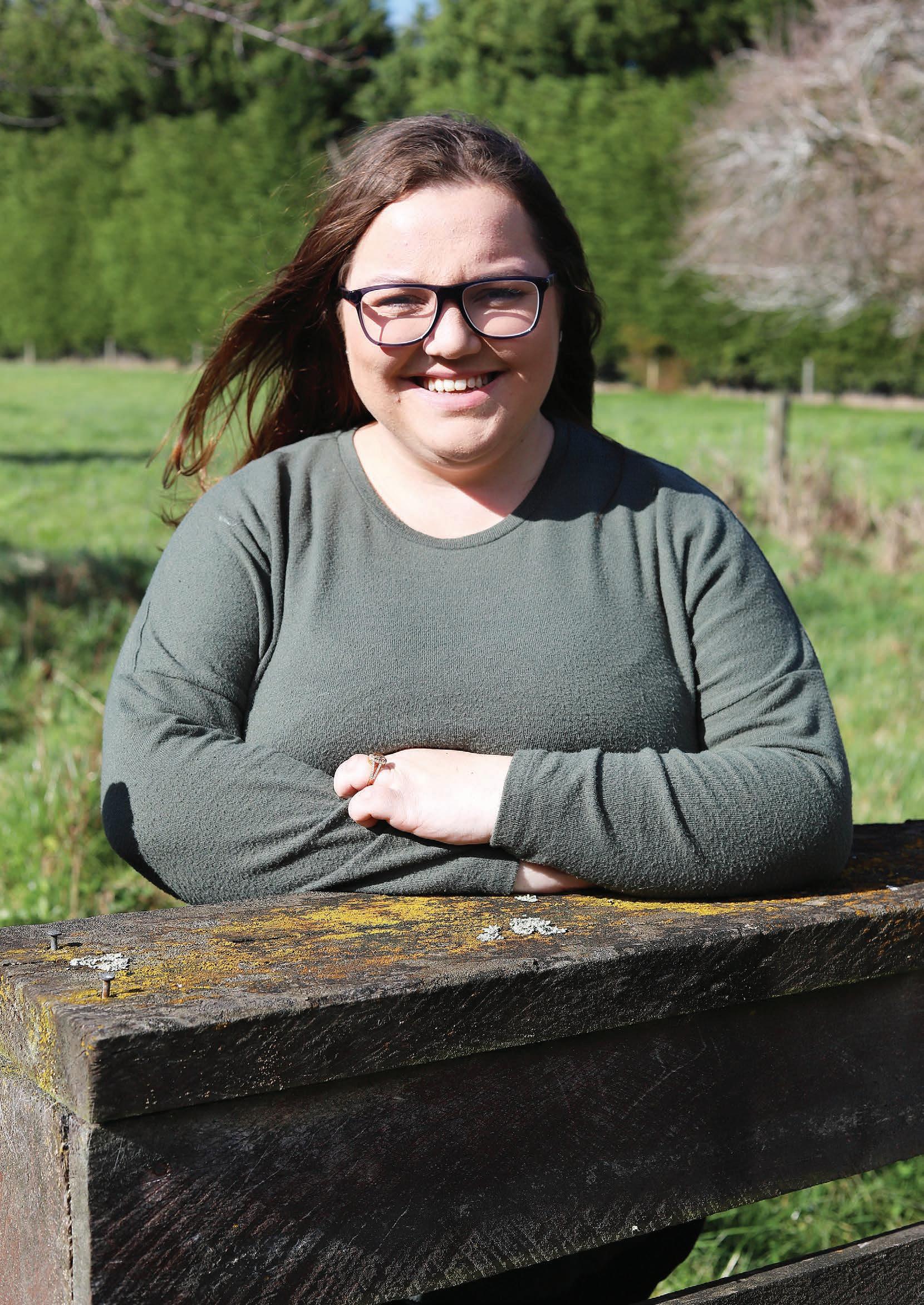
Finding a career that fits around farming and family can be challenging, but when opportunity knocked, a Winton dairy farmer opened the door.
Daniella Sunshine-Tervit describes her childhood as somewhere between that of a lifestyler and rural. Now she can’t imagine living anywhere but the farm. As the new owner of AgriplanSouth, she is helping other people find their dream jobs on-farm too.
Originally from England, Daniella’s family immigrated to New Zealand in 2005. She’s grown up with horses her entire life, with notable success on the
UK’s show pony circuit.
“I rode for producers, which is quite prestigious. I don’t really ride anymore although my children are starting to dip their toes into horses,” Daniella says.
“I’m still involved through stewarding and judging. I’m also on the Southland
A & P cattle and show planning committees.”
When her family moved to NZ, they eventually settled in Southland. During her last year of school, Daniella met her high school sweetheart, now husband,
Gary.
Gary comes from a dairy farming family, so it wasn’t long before she learned the ropes of farming and started relief milking on the family farm.
Not one to rest on her laurels, she headed off to teachers college while relief milking and teaching gymnastics and aerobics on the side.
“I’ve taught a couple of national champions for aerobics which was neat. That put me through teachers college. I never became a teacher though,” she says.
“I started working with Gary on the family farm and got my first real taste of day-to-day dairy farming life – and I loved it.”
Daniella’s bread and butter on the farm was the business administration side from HR to health and safety – give her a list and paperwork, and she’s got it sorted. Although she didn’t know it at the time, this would set her up well for her future with AgriplanSouth.
The couple got married in 2013 and in 2015 fell pregnant with their first daughter. Due to hyperemesis gravidarum, Daniella was forced to stop working from seven weeks pregnant. To complicate an already complicated pregnancy, Gary had a serious motorbike accident around the same time Daniella found out she was pregnant.
“He sustained quite a traumatic brain injury, so it was a really difficult time all around,” she says.
“During his recovery we stayed on the family farm to have that support and stability. We were so fortunate that he came out the other side of that experience.”
A few years later their second daughter arrived and they decided it was time to
Continued page 36



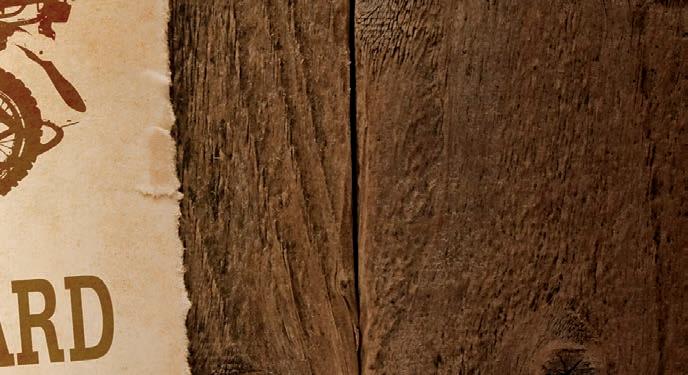

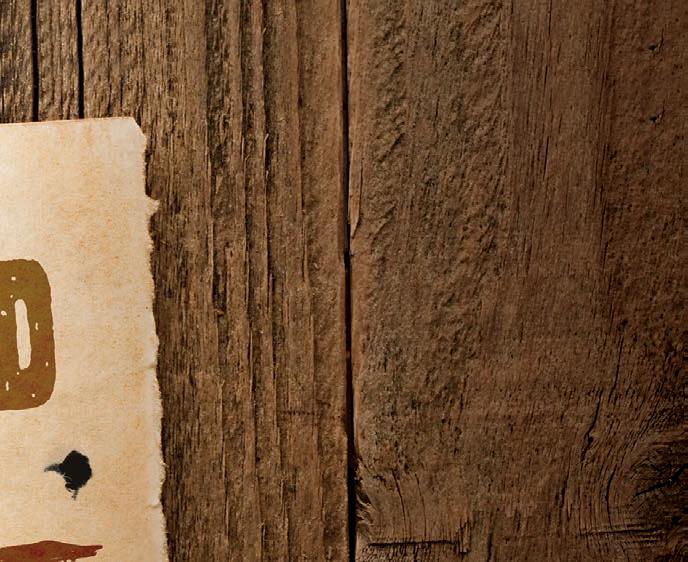
Trade in on New Zealand’ s favourite Farm Bike
Trade in your old farm bike and we’ll give you at least $600 dollars. With minimum trade in applied, pay just $4,695+GST for a new Suzuki DR200SE Trojan. Still made in Japan, with all the quality features you’d expect from Suzuki. Be quick! Stock is limited.
move on from the family farm, and start their move up the ladder.
During their search for a new farming opportunity for Gary, Daniella came to learn about AgriplanSouth, the company she would eventually take over from the then owner Michelle Wallis.
They eventually found a new job on a farm in Winton where they still farm today as contract milkers.
Feeling it was time to start looking for her own career opportunity, Daniella began searching for a job that would fit around her children and Gary’s dairy farming hours. But that was easier said than done.
“We both made the decision early on that we wanted our kids to be the centre of our lives and to prioritise family time as much as we could. Living in the country it proved difficult to find a job that was flexible,” she says.
“I’d applied for a few different things with no luck. Last year, I saw Michelle’s post (the previous owner of AgriplanSouth put up a post saying her direction had changed as she was looking for someone to pass on AgriplanSouth to). It seemed perfect for me.
“As a kid, I always imagined myself a businesswoman, don’t ask me why. I could do paperwork for days.”
She put her best foot forward and reached out to Michelle. After some back and forth and some stiff competition, Daniella was offered the business. Michelle has stayed on in a mentor capacity for Daniella while she gets her feet under the table.
“It’s worked out perfectly. I can work my own hours from home. Gary does six days on, two days off – it means I can mould my schedule around him, so we get that family time.”
It also means she can still do calf rearing on Gary’s family farm and help out on their Winton farm when needed.
AgriplanSouth is a recruitment consultancy agency. In its current state, it’s matching farm workers with employers, but she has big plans. With a website and app currently in the pipeline thanks to her web developer brother, she hopes that the business will take on a slightly different shape over the years to come.
“The idea is to have part of the business be running a team of relief milkers. Relief milking isn’t a full-time job, but the plan would be to provide them with full-time hours split between several farms. This does a few things: one, gives the relief milker stable work and two, gives farmers a place they can go to get reliable casual staff,” she says.
With many hurdles to get over first, like finding the right people, Daniella has hopes that the arm of the business will officially get started in the 2022-23 season.
“It’s a huge gap in the industry at the moment, finding good relief milkers. Covid has been a big player in that. All the farmers I’ve spoken to about it have reacted really positively, so it’s just about
Daniella and husband Gary with their daughters Lucy and Pippa are contract milkers on a farm at Winton.
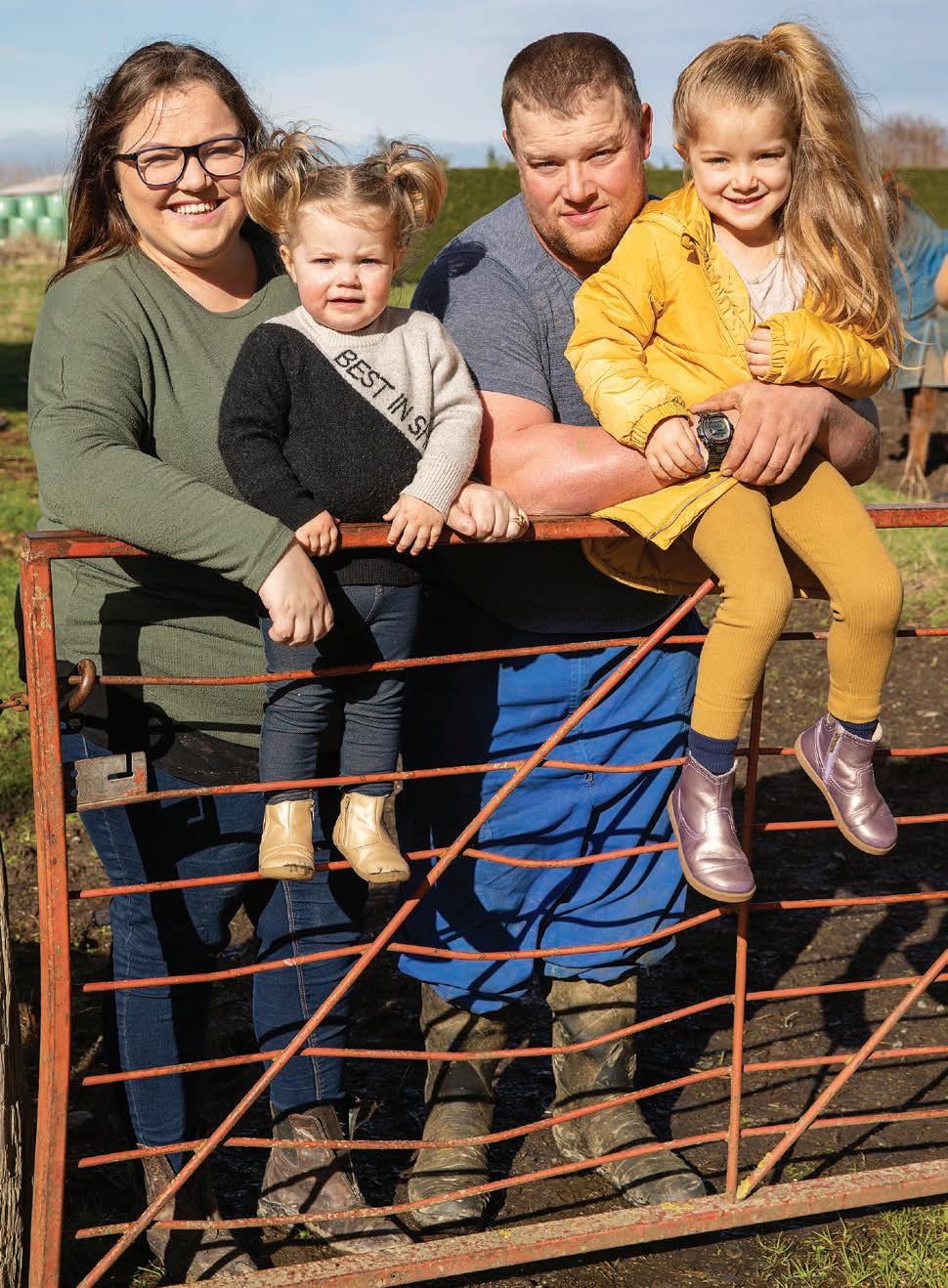
Daniella is passionate about helping people find their right job in the industry.


Creating a good work-life balance has been important for Daniella and is a key driver for her business. Daniella with daughter Lucy, mum Deborah, daughter Pippa and sister Georgie.

finding those right people to get started. Eventually, I’d like it to be all app-based as well to make it simple for everyone,” she says.
As exciting as her future plans for the business are, she admits there have been some challenges to running her own business. Taking over a business with an existing clientele can be challenging, and a lot of it is winning the trust of those clients. It’s also about investing a lot of unpaid hours and energy.
“I think my biggest tip for anyone going into business is not to expect to make money right away. There’s a lot of unpaid work to do before you get to making money. Even though I took over an established business, it’s been a slow mover money-wise,” she says.
“I know it will get there, but I think that puts a lot of people off even wanting to start.”
Great South is a regional development agency that offers a great range of resources, courses and support in the Southland region. Daniella has learned a great deal from their courses and information to help fill in her knowledge gaps.
“I did a marketing course through Great South and my accountancy firm has some great courses coming out too. It’s all about learning. If you don’t know something, go and learn about it. There are so many free resources out there,” she says.
When the idea for the relief milking part of the business popped up, Daniella quickly jumped into market research mode to figure out if the demand was there, the potential price point and all the other intricacies involved.
“It’s also small things like making our brand visible, Gary goes to discussion groups with his AgriplanSouth shirt on, we do some sponsorships and are very active on social media. It’s about being seen. It’s also about trusting yourself. Yes, you might not be making money now, but in 12 months that will change. You have to find something you love, and do it,” she says.
By nature, Daniella isn’t a risk-taker. She calls herself a pessimist, so she’s often fought hard with her inner saboteur.
“That’s my biggest challenge. Believing in myself and the business and trusting my vision,” she says.
When it comes to finding a balance between the business, family and other responsibilities, she takes a slightly different approach. While many like to structure things, she says she wants to keep things somewhat flexible to fit around whatever life throws their way.
“I work wherever I have to,” she says.
“When my daughters have dance class, I’ll do emails but I’ve started to be stricter on myself as I found I was feeling quite consumed by the business because I was working on it with all my free time.
“It’s hard when work literally follows you around in your pocket all day. But it is possible to have your work and life balance the way you want it.” n
“Milking is enjoyable, relaxed and easy on both the cows and milkers.“
Dave Davis - WAIKATO 44 a-side iXPRESS4+ Herringbone Parlour
Milking 330 Friesian Cross cows in just over an hour, Dave says milking should be an enjoyable experience for both operators and cows - with a balance between getting cows milked efficiently and back to pasture quicker, while not overloading his staff.
To achieve this, Dave’s iXPRESS4+ parlour features iNTELARM+ swing over arms and the new iCR+ intelligent cluster removers. Proving an invaluable duo, with a-symmetrical cup alignment and optimum milk-out of each and every cow.
Need straight-forward milking performance like Dave? Call us to book your on-farm consult today – 0800 GEA FARM.
gea.com
Driving dairy efficiencies? We can help.










